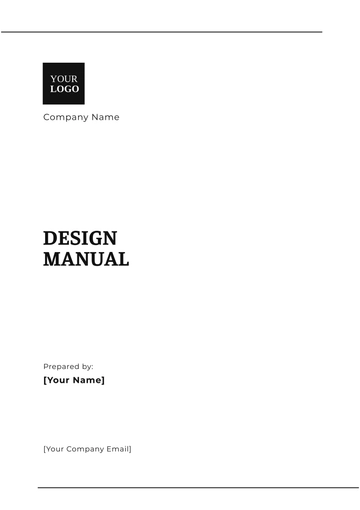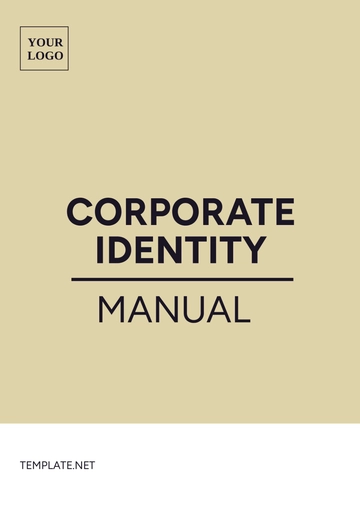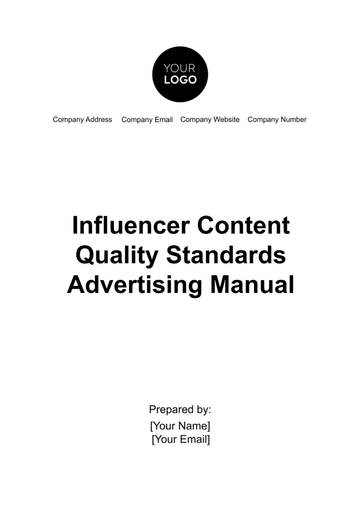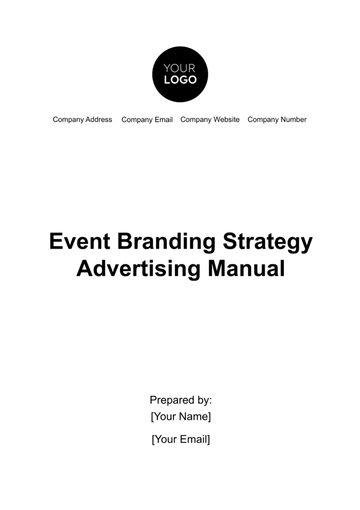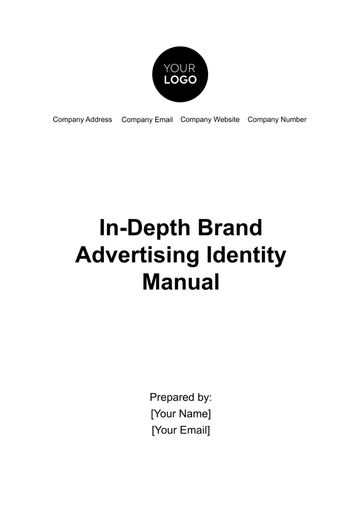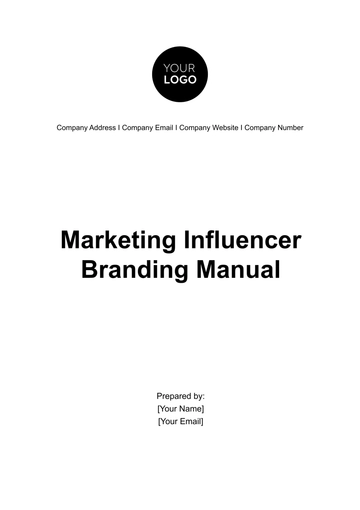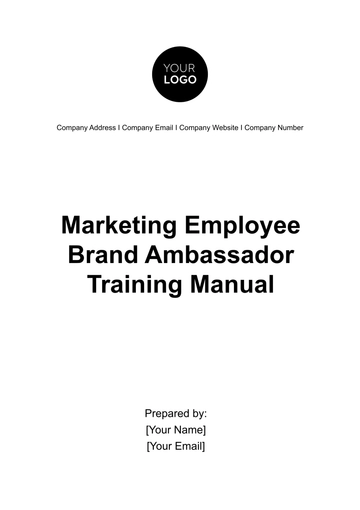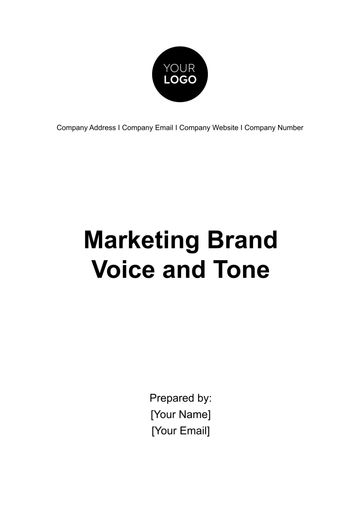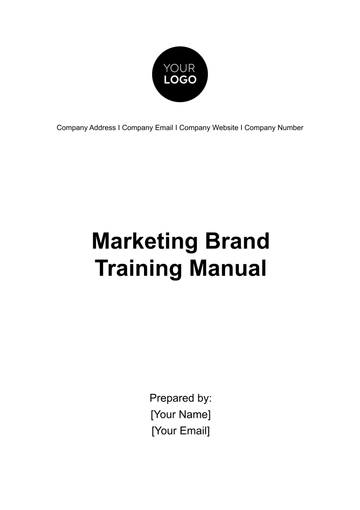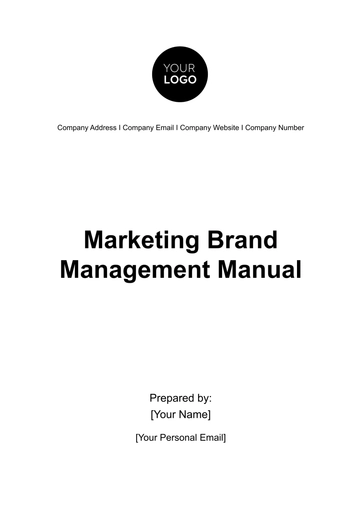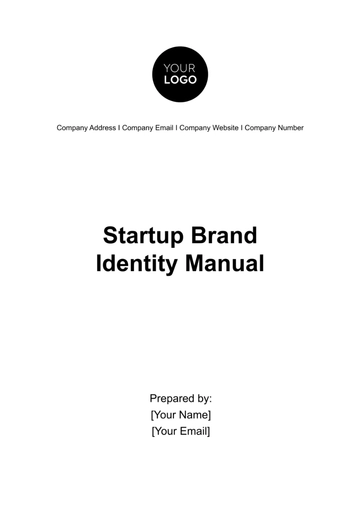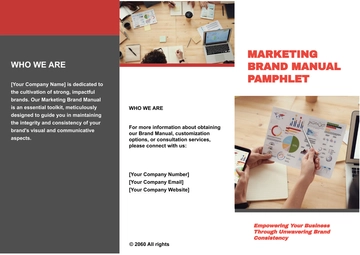Free Event Branding Strategy Advertising Manual
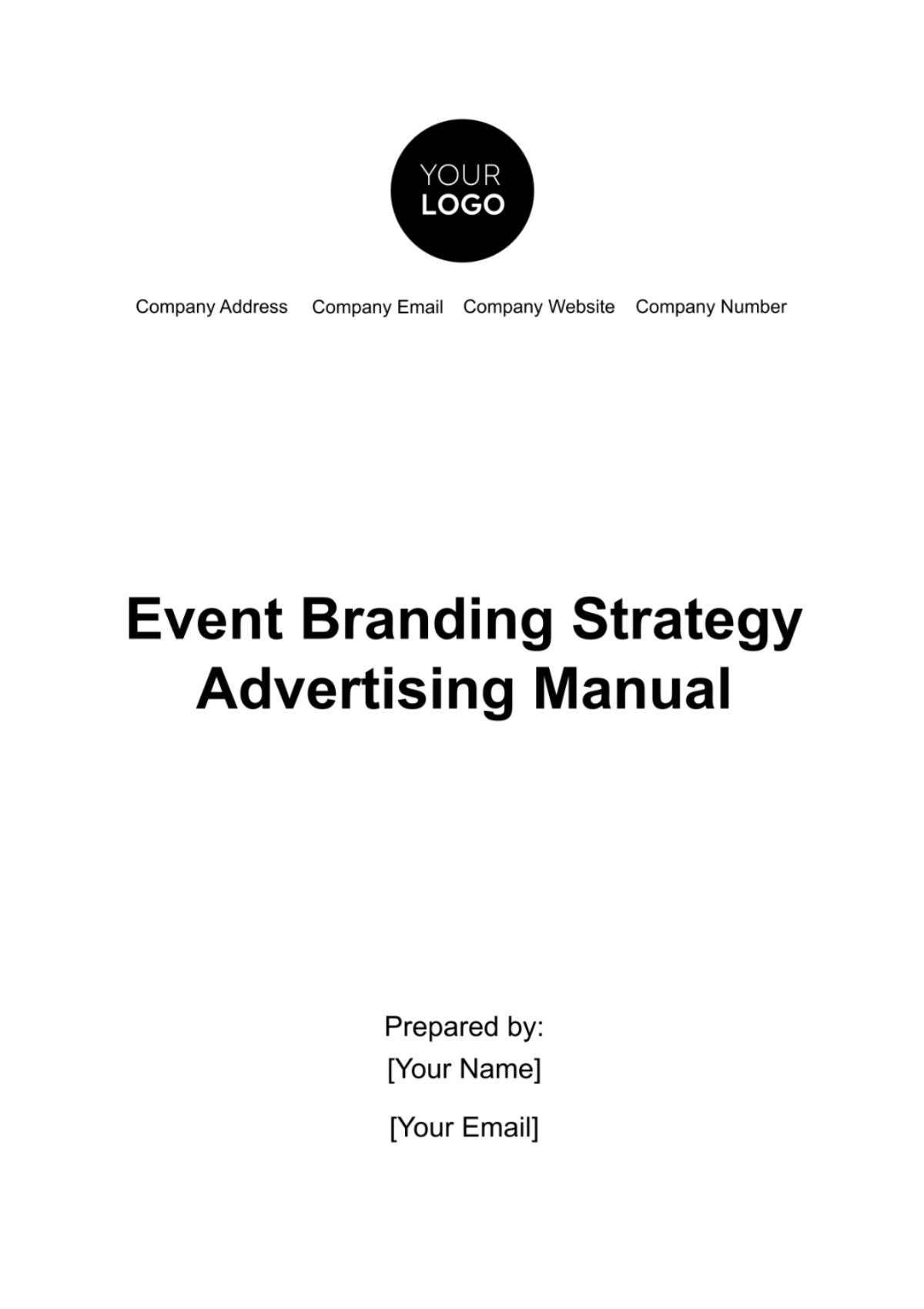
I. Introduction
Event branding is an integral component of marketing and communication strategy, crucial for crafting memorable experiences that engage and resonate with audiences. This manual presents a framework to effectively execute and manage event branding strategies.
It encompasses guidelines on developing a cohesive brand identity, leveraging both digital and physical branding elements, and systematically measuring the impact of these branding efforts.
A. Importance of Event Branding
a. Building Brand Recognition: Event branding is crucial in establishing and reinforcing our company’s presence in the market. It creates a visual and emotional connection with the audience, enhancing brand recognition and recall.
b. Differentiating in Competitive Markets: A well-executed event branding strategy enables our company to stand out in a crowded marketplace. It differentiates the company's events from competitors, offering a unique value proposition to the target audience.
B. Strategic Objectives of Event Branding
a. Audience Engagement and Loyalty: The primary objective of event branding is to engage the audience effectively. By aligning the event's theme and visuals with the audience's interests and preferences, the company can foster connections and loyalty.
b. Maximizing Brand Impact: Through strategic branding, we aim to maximize the impact of its events. This includes extending brand reach, enhancing brand perception, and ultimately driving business growth and success.
This section provides a more comprehensive overview of the significance and strategic goals of event branding for [Your Company Name]. It sets the stage for the detailed guidelines and strategies outlined in the subsequent sections of this manual.
II. Establishing Brand Identity
Developing a strong and cohesive brand identity is fundamental for our event branding. This section outlines the necessary steps and considerations to create a distinctive and resonant brand identity that aligns with the company's values and appeals to its target audience.
A. Core Brand Elements
a. Brand Vision and Mission: Clearly articulate the vision and mission of [Your Company Name]. This articulation should capture the essence of what the company stands for and its aspirations, guiding all branding decisions.
b. Brand Personality and Tone: Establish a brand personality that reflects the ethos of the company. Decide on the tone of voice to be used in all communications, ensuring it resonates with the target audience while staying true to the brand's personality.
c. Target Audience Analysis: Conduct in-depth research to understand the demographics, psychographics, and preferences of the target audience. This analysis is crucial for tailoring the branding to meet and exceed audience expectations.
d. Visual Identity Development: Create a visual identity that includes a logo, color scheme, typography, and imagery. Ensure these elements are not only aesthetically pleasing but also communicate the brand's core message effectively.
Brand Element | Description |
Logo | A unique symbol for the event |
Color Scheme | Colors that evoke the event’s mood |
Typography | Fonts that embody the event's tone |
Imagery | Visuals that resonate with the audience |
B. Consistency and Adaptability
a. Brand Guidelines: Develop comprehensive brand guidelines that outline how to use the brand elements consistently across various mediums. This ensures uniformity in the brand's representation.
b. Adaptability Across Platforms: Ensure the brand identity is adaptable for different platforms and mediums. This includes both digital (websites, social media) and physical (print, merchandise) platforms.
c. Cultural Sensitivity and Inclusivity: Consider cultural sensitivity and inclusivity in branding elements. The brand identity should respect and embrace diverse audiences, reflecting [Your Company Name]'s commitment to inclusivity.
The details provided in this section is a robust and comprehensive approach. It ensures that the brand identity of [Your Company Name] not only stands out but also remains consistent, adaptable, and inclusive across various platforms and audiences.
III. Branding Elements and Materials
In this section, we delve into the specific elements and materials that are crucial for effective event branding. A careful selection and design of these elements ensure consistency in conveying the brand's message across various touchpoints.
A. Digital Branding Elements
a. Website Design: Develop a user-friendly and visually appealing event website. It should reflect the event's branding, be easy to navigate, and provide all necessary information.
b. Social Media Strategy: Create a comprehensive social media plan that includes regular posts, interactive content, and engagement tactics. The strategy should leverage the unique strengths of different platforms to amplify the event's reach.
c. Email Marketing: Design email templates that align with the event's visual theme. Use these for regular communications, updates, and promotions related to the event.
d. Online Advertising: Develop online advertising campaigns that utilize the event's branding elements. These should be targeted effectively to reach the desired audience segments.
Digital Element | Description |
Website | Central online presence for the event |
Social Media | Platforms for promotion and engagement |
Email Marketing | Direct communication with attendees |
Online Advertising | Paid campaigns to increase reach |
B. Physical Branding Materials
a. Event Signage: Design clear and visually consistent signage for the event. This includes directional signs, information boards, and banners.
b. Promotional Merchandise: Create a range of branded merchandise such as t-shirts, caps, and other items that can be used for promotion or sold as memorabilia.
c. Printed Materials: Develop printed materials like brochures, flyers, and posters. These should be consistent with the overall event branding and used for both promotion and information dissemination.
d. Event Decor: Plan the event’s decor, including stage design, seating arrangement, and ambient elements, to reflect the event’s theme and branding.
Material Type | Description |
Event Signage | Signage for navigation and information |
Promotional Merchandise | Items for promotion and souvenirs |
Printed Materials | Brochures, flyers, and posters |
Event Decor | Decorative elements for the event venue |
The details provided in this section will serve as a guide for [Your Company Name] in creating impactful and cohesive branding elements, both digital and physical, ensuring a consistent brand experience across all attendee touchpoints.
IV. Execution and Management
Effective execution and management of event branding are crucial for the success of our company’s events. This section outlines the key processes and strategies for implementing and overseeing the branding elements efficiently and effectively.
A. Planning and Coordination
a. Timeline Development: Create a detailed timeline for the development and deployment of branding elements. This should include key milestones, deadlines for design approvals, production, and distribution.
b. Budget Management: Develop a comprehensive budget that accounts for all aspects of branding, including design, production, digital marketing, and physical materials. Regularly monitor expenditures to ensure alignment with the budget.
c. Cross-Department Collaboration: Ensure collaboration between marketing, design, and event planning teams. This integrated approach guarantees that all branding elements are coherent and aligned with the overall event strategy.
d. Vendor and Supplier Coordination: Select and manage relationships with vendors and suppliers for branding materials. Ensure they understand the brand vision and can deliver high-quality products within the set timelines.
B. Quality Control and Risk Management
a. Quality Assurance: Implement quality control checks at various stages of branding material production. Regular reviews and approvals are necessary to maintain high standards.
b. Risk Assessment: Identify potential risks in the execution of branding strategies, such as delays in production, technical issues with digital platforms, or budget overruns. Develop contingency plans for these scenarios.
c. Feedback Loops: Establish feedback mechanisms with internal teams and external stakeholders to gather insights and suggestions for improvement. This should include pre-event testing and post-event reviews.
d. Legal and Compliance Checks: Ensure all branding materials and campaigns comply with relevant legal standards and industry regulations, particularly concerning trademarks, copyrights, and advertising guidelines.
By following the processes and strategies of this section, our company will be equipped to effectively implement its event branding, ensuring quality, consistency, and compliance, while also being prepared to mitigate potential risks.
V. Impact Assessment and Analytics
Evaluating the effectiveness of event branding is crucial to understanding the impact of its efforts and to inform future strategies. This section outlines methods for assessing branding impact and utilizing analytics to measure success.
A. Data Collection and Analysis
a. Engagement Metrics: Track engagement metrics across digital platforms, including website visits, social media interactions, and email open rates. These metrics offer insights into audience engagement with the branding content.
b. Reach and Exposure: Measure the reach and exposure of branding efforts through analytics tools. This includes tracking the number of people who have seen or interacted with the branding materials online and offline.
c. Audience Feedback: Collect feedback from event attendees through surveys and feedback forms. This feedback is invaluable for understanding audience perception and experience of the branding.
d. Conversion Tracking: Monitor the conversion rates, such as ticket sales or sign-ups, that can be directly attributed to branding efforts. This helps in understanding the effectiveness of branding in driving action.
B. Reporting and Insights
a. Performance Reports: Compile data into comprehensive reports that illustrate the performance of branding activities. These reports should highlight key metrics and offer insights into what worked well and areas for improvement.
b. ROI Analysis: Conduct a return on investment (ROI) analysis to evaluate the financial efficiency of the branding efforts. This analysis helps in determining the cost-effectiveness of different branding strategies.
c. Benchmarking: Compare the event's branding performance against industry benchmarks or past events. This comparison provides context to the data and helps in setting realistic goals for future events.
d. Strategic Recommendations: Based on the data analysis and insights, develop strategic recommendations for future branding initiatives. This should include suggestions for optimizing strategies to enhance brand impact and audience engagement.
This section with its detailed methodologies ensures that [Your Company Name] has a robust framework for measuring the success of its event branding efforts. This data-driven approach enables informed decision-making and continuous improvement in branding strategies.
VI. Conclusion
This manual provides a structured approach to executing a successful event branding strategy. By aligning branding elements with the company's core values and audience preferences, [Your Company Name] can create engaging and impactful events that leave lasting impressions.
- 100% Customizable, free editor
- Access 1 Million+ Templates, photo’s & graphics
- Download or share as a template
- Click and replace photos, graphics, text, backgrounds
- Resize, crop, AI write & more
- Access advanced editor
Elevate your event branding with ease using Template.net's Event Branding Strategy Advertising Manual Template. This fully customizable and editable template, equipped with our intuitive Ai Editor Tool, puts you in control of crafting compelling advertising strategies. Stand out from the crowd and leave a lasting impression with Template.net's innovative solutions.

